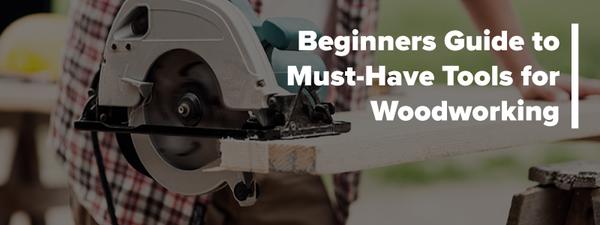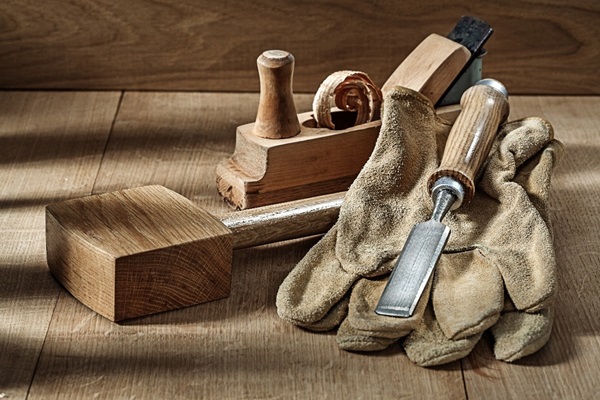To establish a wood workshop, you need to have basic tools, safety equipment, and sufficient workspace. A fully stocked toolbox, power tools, hand tools, workbench, clamps, and sawhorses are necessary to complete various wood projects.
Safety glasses, gloves, ear protection, and dust masks are also vital to protect you from harmful elements. Moreover, adequate ventilation, proper lighting, and organized storage also contribute to a functional woodworking area. A wood workshop can be a wonderful space for diy enthusiasts and professional carpenters alike, allowing them to exercise their creativity and build beautiful objects with precision.
Building a wood workshop is an exciting project that requires some planning and preparation, from selecting the location to choosing the right tools and equipment. Whether you are a beginner or an experienced woodworker, having a functional and well-equipped workshop is essential. In this article, we will discuss the fundamental requirements that you need to establish a wood workshop, including tools, safety equipment, workspace, and other necessary items. So, let us dive into the details of building a fully equipped wood workshop and explore the possibilities of creating stunning wood pieces.

Credit: www.yorksaw.com
Essential Woodworking Tools
Woodworking is a beautiful skill that requires proper tools to produce quality products. When it comes to hand tools for woodworking, essentials include a claw hammer, chisels, a miter saw, a hand saw, and measuring tape. For power tools, a table saw, jigsaw, drills, and sanders are a must-have.
These tools help you accomplish your tasks with precision and accuracy. With proper care and maintenance, your tools can last for many years. They all come in different shapes, sizes, and functionality, thus choosing the right tool for a specific task is essential.
Whether you are a beginner or expert, having these hand and power tools in your wood workshop is essential to improve your woodworking skills.
Workshop Layout
When it comes to setting up a wood workshop, choosing the right location is crucial. The space must provide an adequate layout to enable free movement and easy access to tools and equipment. A workshop situated in a basement or a garage, for instance, provides a convenient location, but it may not afford sufficient space for the desired layout.
Consider installing the doors and windows where natural light can enter in. Also, ensure there’s enough ventilation and electricity supply. Once you’ve located the perfect space, measure the area and plan the layout to make the most of the space.
The ideal workshop layout should include dedicated workstations for cutting, sanding, and assembly, ample storage for tools and materials, and enough space to move around. With a well-planned layout and an excellent location, you can create a highly efficient workshop that’s pleasant to work in.
Materials
Choosing the right materials for your wood workshop is essential. When it comes to wood, there are different types suitable for various projects and budgets. Plywood, mdf, and particle board are popular options. Moreover, fasteners like nails, screws, and glue are necessary for a sturdy build.
As a woodworker, it’s crucial to know which materials are suitable for your project. Additionally, understanding how each type of wood and fastener works can help you create durable and high-quality pieces. We’ll delve deeper into the different wood types and fasteners you need for your wood workshop.
Safety And Maintenance
Being safe and maintaining a wood workshop is crucial to any woodworker. Safety precautions are essential before starting any project. Personal protective gear like goggles, gloves, and ear protection should be worn to prevent accidents. Keep the workshop clean and well-ventilated to avoid inhaling sawdust.
Ensure that all power tools are in good condition by checking cords and blades regularly. Additionally, store all tools properly and have a fire extinguisher close by. Moreover, set up a first aid kit for any accidents that might occur.
Following these tips and tricks will keep you safe and allow you to enjoy working on your next project in a clean and organized workspace.
Frequently Asked Questions On What Do You Need In A Wood Workshop?
What Basic Tools Do I Need In A Wood Workshop?
To get started, you’ll need a saw, a drill, a hammer, a measuring tape, sandpaper, and a workbench with clamps.
Do I Need Power Tools To Work With Wood?
Although you can work with wood using hand tools only, power tools like a jigsaw or circular saw may be useful for larger and more complex projects.
How Do I Ensure Safety In My Wood Workshop?
Wear safety goggles, a dust mask, and earplugs to protect your eyes, lungs, and ear drums. Keep the workspace clean and organized.
How Can I Choose The Right Type Of Wood For My Project?
Consider the purpose of your project and the characteristics of different types of wood. Hardwoods like oak or maple are more durable than softwoods like pine.
What Kind Of Finish Should I Use On My Woodworking Projects?
Choose a finish based on the type of wood and the desired appearance. Common finishes include varnish, stain, or paint.
Conclusion
As an aspiring woodworker or a seasoned professional, setting up a well-equipped workshop is crucial to unleash your creativity and bring your projects to life. A wood workshop requires basic tools to start, but as you progress, you will realize the need for more specialized tools and equipment.
Your workshop should be a reflection of your personal style and preference, and every tool should serve a purpose. While starting small, remember that upgrading your tool collection over time will add value to your work, ensure precision, and boost efficiency.
A well-organized and maintained workshop will make woodworking a fulfilling and enjoyable experience, allowing you to create pieces you can be proud of. With patience and dedication, you can achieve your woodworking goals and see your artistic vision come to life in your workshop.
Happy woodworking!
